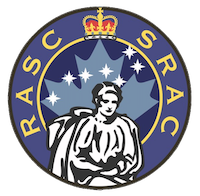Edward Charles Pickering (July 19, 1846–February 3, 1919) was an American astronomer and physicist, brother of William Henry Pickering.
Along with Carl Vogel, Pickering discovered the first spectroscopic binary stars. He wrote Elements of Physical Manipulations (2 vol., 1873–76).
Pickering attended Boston Latin School, and received his B.S. from Harvard in 1865. Soon after graduating from Harvard, Pickering taught physics at the Massachusetts Institute of Technology. Later, he served as director of Harvard College Observatory from 1877 to his death in 1919, where he made great leaps forward in the gathering of stellar spectra through the use of photography.
At Harvard, he recruited many women to work for him, including Annie Jump Cannon, Henrietta Swan Leavitt, and Antonia Maury. These women, who came to be known as "Pickering's Harem" by the scientific community, made several important discoveries at HCO. Leavitt's discovery of the period-luminosity relationship for Cepheids, published by Pickering, would prove the foundation for the modern understanding of cosmological distances.
In 1882, Pickering developed a method to photograph the spectra of multiple stars simultaneously by putting a large prism in front of the photographic plate.
In 1887 a bequest of a quarter of a million dollars from the estate of the engineer Uriah Boyden became available to Director Pickering for HCO to establish a high-altitude observatory, which was done in Aréquipa, Peru. Pickering sent his brother William Henry Pickering to be the first director. W.H. Pickering only spent two years at Aréquipa, and drew heavily from the bequest to invest in the new facilities. The Boyden Station Observatory continued in Peru until 1927, providing the bulk of plates used by Cannon to develop the Harvard Classification Scheme (O-B-A-F-K-M) and southern parts of the Henry Draper Catalogue. Boyden Observatory was then relocated outside of Bloemfontein, South Africa.
He also, along with Williamina Fleming designed a stellar classification system based on an alphabetic system for spectral classes that was first known as the Harvard Stellar Classification and became the basis for the Henry Draper Catalog.
Pickering is credited for making the Harvard College Observatory known and respected around the world, and it continues today to be a well-respected observatory and program.
Director Pickering was also at the genesis of the American Association of Variable Star Observers in 1911, when his friend William Tyler Olcott agreed to collect variable star estimates from amateur astronomers as a proxy for HCO.
The asteroid 784 Pickeringia, and the craters Pickering on the Moon and Pickering on Mars, are jointly named after him and his brother William Henry Pickering.
Director Pickering was elected an honorary member of the Astronomical and Physical Society of Toronto on 1894-01-09. It was recorded that Pickering, "...who had always taken a kindly interest in the Society and had laid it under obligations not only by donating the publications of his great Observatory but by promptly answering various questions submitted to him, said "Your letter asking if I would be willing to accept Honourary Membership in the Astronomical and Physical Society of Toronto is duly received. In reply, if I should be elected, I should accept with pleasure. With regards and pleasant reminiscences for Mr. Carpmael, I remain yours faithfully," and, later, after notice of election, "Please convey to the Society my sincere thanks for this honour."

